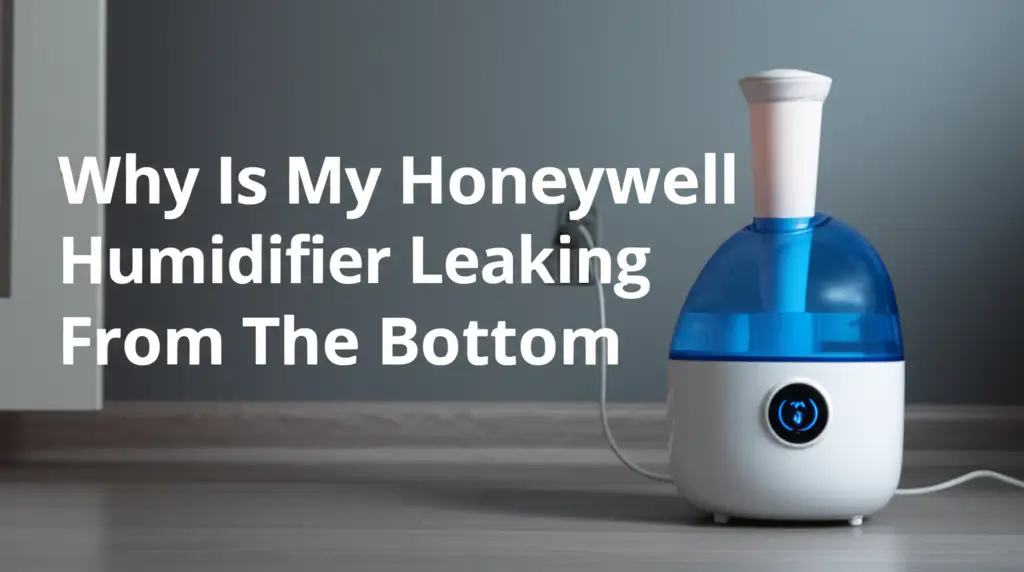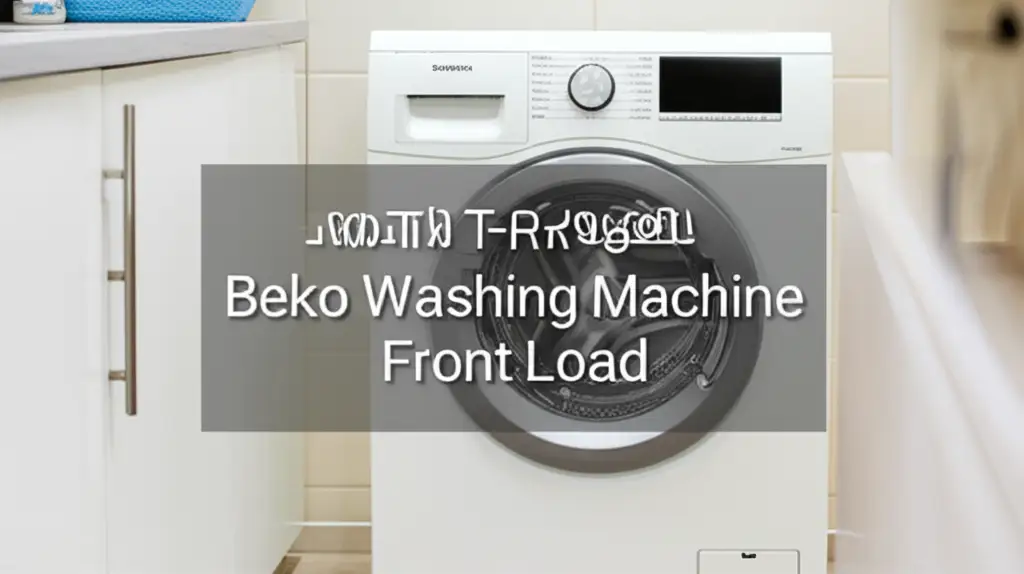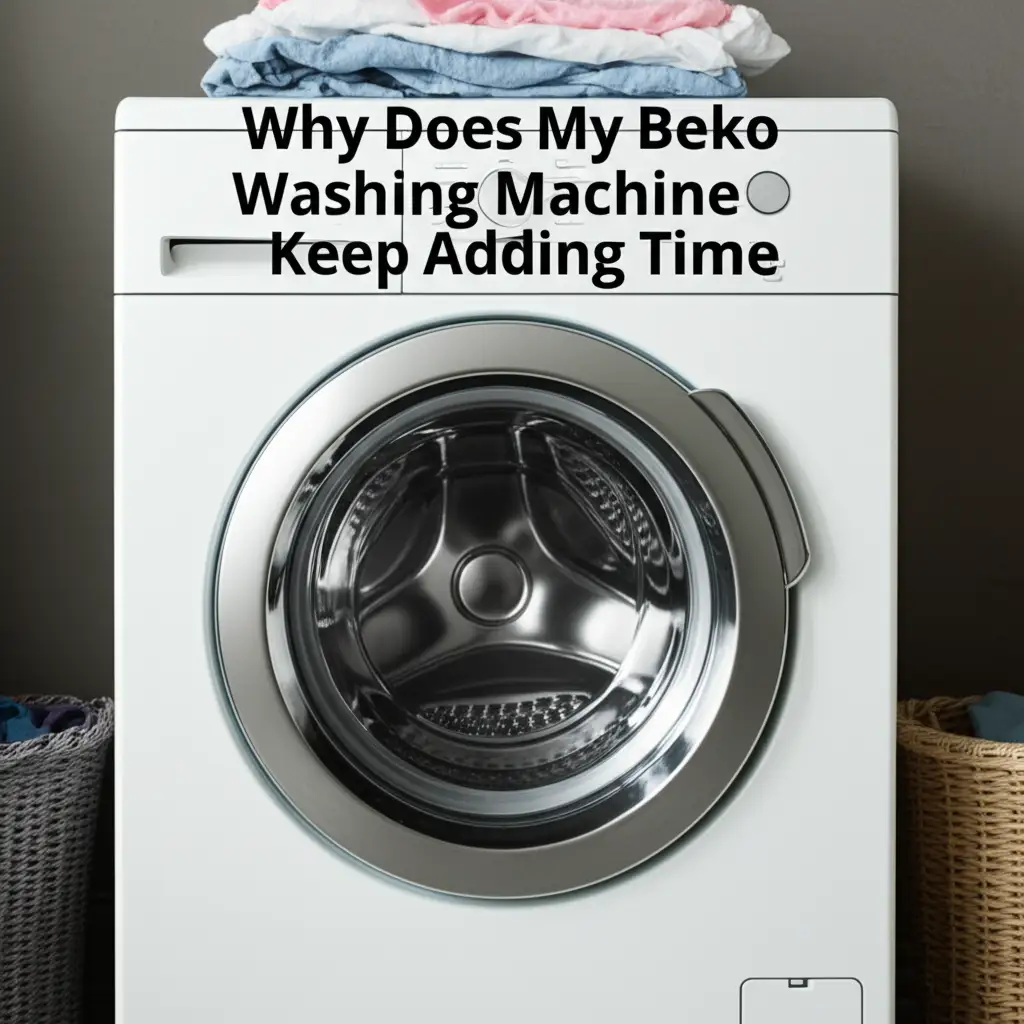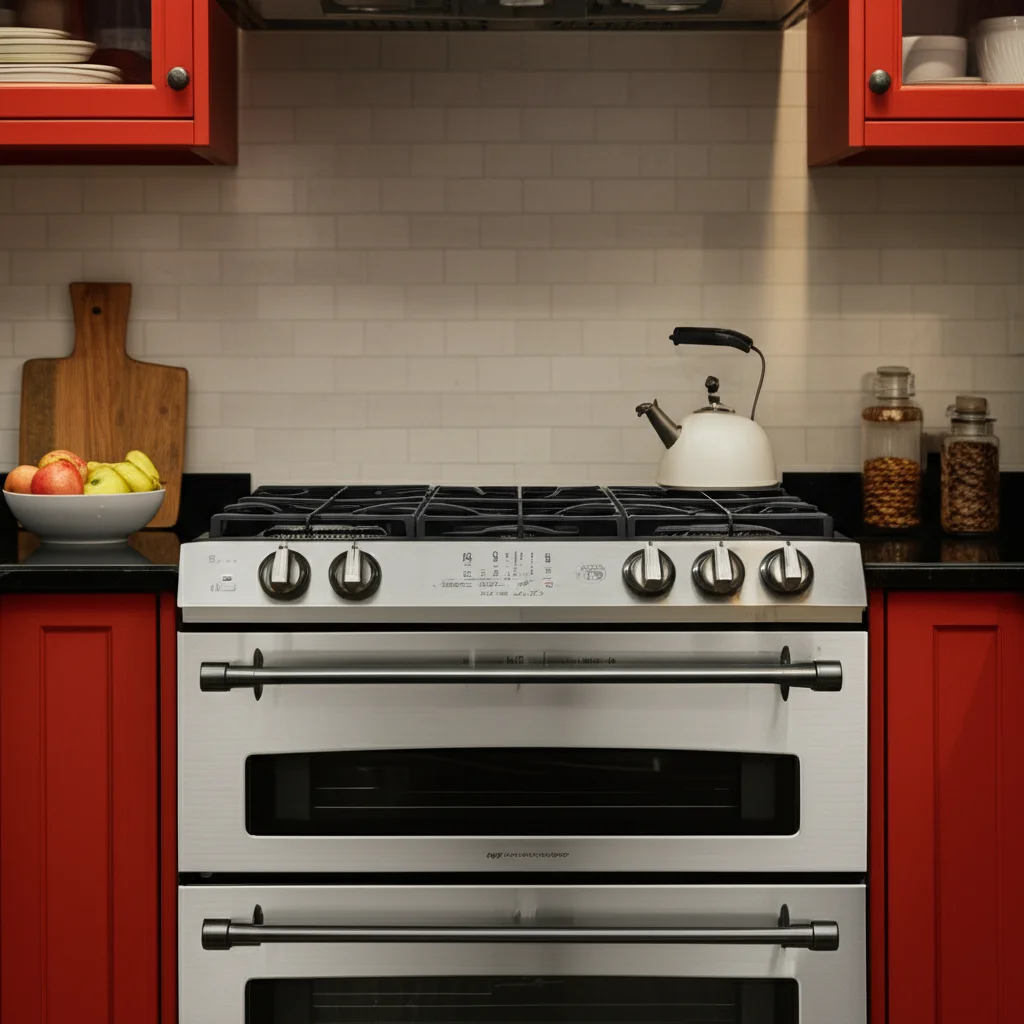· Katria Melrose · Home Appliances · 20 min read
Why Is My Honeywell Humidifier Leaking From The Bottom

Why Your Honeywell Humidifier Leaks From The Bottom
Discovering a puddle of water around your Honeywell humidifier can be frustrating. A leaking humidifier is not just a nuisance; it can damage floors or furniture. You might wonder, “Why is my Honeywell humidifier leaking from the bottom?” This common issue often points to straightforward problems. Understanding these causes helps you find a quick solution.
In this article, we explore the most frequent reasons for a Honeywell humidifier leaking from the bottom. We cover everything from simple overfilling to more complex internal component failures. You will learn how to troubleshoot these issues step-by-step. We also provide practical tips for prevention and maintenance. By the end, you will understand how to stop the leak and keep your humidifier working well.
Takeaway
- Check Water Levels: Do not overfill the water tank.
- Inspect Seals and Gaskets: Look for cracks or wear on rubber components.
- Clean Regularly: Remove mineral buildup from the base and components.
- Ensure Proper Placement: Keep the humidifier on a flat, stable surface.
- Verify Tank Seating: Make sure the water tank sits correctly on the base.
Why is my Honeywell humidifier leaking from the bottom?
Your Honeywell humidifier leaks from the bottom due to several reasons. These include overfilling the tank, cracked water reservoirs, worn-out seals or gaskets, or significant mineral buildup. A misaligned water tank or a malfunctioning float valve also causes water to escape from the base.
Understanding Common Reasons for Honeywell Humidifier Leaks
A Honeywell humidifier leaking from the bottom can be a puzzle. Several factors contribute to this problem. We see this issue often with various humidifier models. Understanding these common reasons helps you diagnose the problem faster. You can then apply the correct fix to stop the leak.
One primary reason for leaks is simple user error. Sometimes, we overfill the water tank past the marked line. This causes water to overflow into areas not meant to hold excess liquid. The water finds its way out through the bottom. Always check the maximum fill line on your humidifier. Filling it to the correct level prevents many unnecessary spills.
Another common culprit is the water tank itself. Over time, the plastic of the tank can develop hairline cracks. These cracks are often hard to see with the naked eye. Even small fissures allow water to seep out slowly. This water collects at the base of the unit and then leaks onto the floor. Inspecting your water tank carefully for any signs of damage is important. Look for visible cracks or stress marks. If you find any, replacing the tank is usually the best option.
Internal components also play a role. Seals and gaskets inside the humidifier wear out. These rubber parts create a watertight barrier between different sections of the unit. When they become brittle, cracked, or dislodged, water escapes. The base often becomes the exit point for this escaping water. Proper maintenance and inspection of these parts are crucial.
Mineral buildup is a significant factor in many humidifier issues, including leaks. Hard water leaves mineral deposits on internal parts. These deposits, also known as scale, can block water pathways. They can also prevent seals from closing completely. When water flow is obstructed or seals fail, water can back up and leak. Regular cleaning helps prevent this accumulation. Neglecting cleaning often leads to leaks and reduced performance. You can learn more about how to clean your Honeywell humidifier to prevent this issue.
Finally, incorrect assembly or placement contributes to leaks. If the water tank does not sit correctly on the base, its valve may not seal properly. This allows water to continuously flow into the base, overwhelming the system. The humidifier may also leak if it sits on an uneven surface. An unstable unit can shift, breaking seals or causing water to slosh out. Always ensure your humidifier is stable and correctly assembled. Addressing these common reasons provides a clear path to solving your leaking humidifier problem.
Addressing Overfilling and Tank Issues
Overfilling the water tank is a surprisingly common reason for a Honeywell humidifier leaking from the bottom. People often think more water means longer operation, but it can lead to problems. Each humidifier model has a specific maximum fill line. Going past this line can cause water to overflow into the unit’s mechanical sections. These areas are not designed to hold excess water. The extra water then spills out from the base.
Always pay attention to the fill line. It is usually a clearly marked indicator on the water tank itself. Filling water slowly helps you avoid accidental overfilling. If you use a pitcher, pour water in increments. This allows you to monitor the level closely. Once you reach the maximum fill line, stop adding water. This simple step prevents many leaks.
The water tank itself can also be the source of a leak. Over time, plastic can degrade. Small cracks can form, especially around the base of the tank or near the handle. These cracks may be tiny, but they allow water to seep out. You might not see the crack when the tank is empty. The pressure of the water when the tank is full makes the leak visible.
To check for tank cracks, empty the water tank completely. Fill it with water in a sink or bathtub. Watch closely for any drips or wet spots on the outside surface. Pay attention to seams and stress points. If you find a crack, the tank needs replacement. Most Honeywell parts are available online or through customer service. Replacing a cracked tank is essential for stopping persistent leaks.
Proper seating of the water tank on the base unit is also critical. The tank has a valve at its bottom that fits into a receiving mechanism on the humidifier base. This valve opens to release water into the reservoir below. If the tank is not seated correctly, the valve might not seal properly. This allows water to flow continuously into the base, overwhelming the system. The excess water then overflows and leaks from the bottom.
Make sure the tank clicks firmly into place. Listen for a secure fit. If it feels wobbly or loose, try lifting it and repositioning it. Sometimes, debris in the base prevents a proper seal. Inspect the base where the tank sits for any foreign objects. Clearing any obstructions ensures a snug and leak-free connection. Following these steps helps resolve most overfilling and tank-related leak issues.
Inspecting and Maintaining Seals and Gaskets
Seals and gaskets are vital components in your Honeywell humidifier. They create a watertight barrier. These parts prevent water from escaping where it should not. When a Honeywell humidifier is leaking from the bottom, these seals are often the cause. Over time, seals made of rubber or silicone can degrade. They become stiff, cracked, or lose their elasticity. This causes them to lose their ability to form a tight seal.
You can find seals in several key areas of your humidifier. One common place is around the water tank’s fill cap. This cap needs to form a tight seal when screwed on. If the gasket inside the cap is worn, water can leak out. Another important seal is at the bottom of the water tank. This seal often works with a spring-loaded valve. It controls water flow into the humidifier’s base. If this particular seal fails, water will pour out unregulated. This quickly leads to an overflow and a leak from the bottom.
To inspect these components, first unplug your humidifier. Carefully remove the water tank. Examine the rubber gasket inside the fill cap. Look for any signs of cracking, tearing, or discoloration. If the gasket looks compromised, it needs replacement. Next, turn the water tank upside down. Inspect the seal around the water valve at the tank’s base. This is usually a rubber ring. Check its condition. If it is hard, brittle, or shows signs of wear, it cannot hold water effectively.
You should also look for seals within the main base unit. Some models have seals around the transducer or other water-bearing components. These are often harder to access. However, a general visual inspection for water traces around these areas can indicate a problem. If you notice water accumulation directly around an internal component, its seal might be failing.
Maintaining these seals extends their lifespan. Regular cleaning helps prevent mineral buildup on these surfaces. Mineral deposits can prevent seals from closing completely. This compromises their effectiveness. When cleaning, gently wipe down the seals. Avoid harsh chemicals that could degrade the rubber. If a seal is clearly damaged, replacing it is the best solution. Many replacement parts are available online. Properly functioning seals are essential for a leak-free humidifier operation.
The Role of Mineral Buildup and Clogs
Mineral buildup is a silent culprit behind many humidifier problems, including leaks. When your Honeywell humidifier is leaking from the bottom, mineral deposits are a strong suspect. Hard water contains dissolved minerals like calcium and magnesium. As water evaporates, these minerals are left behind. They accumulate on internal surfaces of your humidifier. This includes the water basin, heating elements, and sensors. Over time, these deposits form a hard, crusty layer known as scale.
Mineral buildup causes several issues that lead to leaks. First, scale can block water pathways. This forces water to find alternative routes, often leading to overflow. For example, if the float valve or sensor responsible for regulating water levels becomes encrusted, it may not function correctly. It might fail to signal when the water basin is full. This causes the humidifier to continue drawing water, leading to an overflow. The excess water then spills out from the bottom.
Second, mineral deposits can interfere with the proper seating of seals and gaskets. Even a small piece of scale stuck to a rubber seal can prevent it from forming a tight, watertight barrier. Water then seeps through the tiny gap created by the deposit. This gradual leakage collects at the base and eventually drips onto your floor. This problem often occurs around the tank valve and the main water basin.
Third, significant buildup can damage components. Scale can put stress on plastic parts, leading to cracks. It can also impede the movement of moving parts, causing them to stick or break. This type of damage directly contributes to leaks. A cracked water basin or a broken float valve will certainly cause a leak.
Regular cleaning is the most effective way to combat mineral buildup. I make sure to clean my humidifier every week or two, depending on how often I use it. You can learn more about general humidifier cleaning techniques to keep your unit running smoothly. Using distilled water or demineralized water can also reduce mineral deposits significantly. These types of water contain fewer dissolved minerals. This reduces the amount of scale that forms inside the unit.
For removing existing buildup, a descaling solution is necessary. White vinegar is a popular and effective natural descaler. Fill the base with vinegar and let it soak. Then, gently scrub away the loosened deposits. You can find detailed instructions on how to clean a humidifier with vinegar. This helps ensure all internal components and seals function correctly. By keeping your humidifier free of mineral buildup, you extend its life and prevent annoying leaks from the bottom.
Troubleshooting Malfunctioning Internal Components
When your Honeywell humidifier is leaking from the bottom, and you have ruled out simple issues like overfilling or tank cracks, it is time to look at internal components. Several parts within the humidifier base manage water flow and levels. If any of these malfunction, water can escape. Identifying the specific faulty component is key to fixing the leak.
One critical internal component is the float valve. This valve regulates the water level in the main reservoir of the humidifier. It works much like a toilet tank fill valve. As water fills the basin, a float rises. When the water reaches a certain level, the float activates a mechanism that closes the water inlet. If the float valve sticks, is damaged, or is covered in mineral buildup, it may not close properly. This causes the humidifier to continuously draw water, leading to an overflow. The excess water has nowhere to go but out through the bottom of the unit.
To check the float valve, first unplug the humidifier. Remove the water tank. Inspect the area where the water drains into the base. You should see a small floating component, usually a plastic arm or ball. Gently try to move it up and down. It should move freely. Look for any mineral deposits or debris obstructing its movement. If it is stuck, clean it carefully. If it appears broken, it may need replacement.
Another internal part to consider is the transducer or nebulizer. In ultrasonic humidifiers, this component vibrates at a high frequency to produce mist. It sits in the water basin. While not directly involved in water level regulation, a faulty transducer can sometimes cause strange water behavior. If it develops a crack or its seal fails, water can seep into the electrical housing below. This leads to internal leaks that eventually manifest at the bottom of the unit. Inspect the transducer for any visible damage or signs of water around its edges.
The main water basin itself can also be cracked. Although less common, the plastic of the basin can develop a hairline fracture. This might happen due to impact or stress over time. A cracked basin allows water to slowly escape into the outer casing, then leak from the bottom. To check for this, empty the humidifier and dry the basin completely. Look closely for any fine lines or signs of moisture on the outside of the basin when it is full. This might require disassembling part of the humidifier, which can be complex.
Finally, internal hoses or tubes in some models can become disconnected or cracked. These hoses transport water from one part of the humidifier to another. If a connection loosens or a hose splits, water will leak internally. This water collects at the base. Visually inspect any visible tubing inside the unit for damage or disconnections.
Troubleshooting internal components requires a careful approach. If you are not comfortable disassembling your unit, consider consulting the humidifier’s manual or contacting Honeywell customer support. Sometimes, replacing a small internal part can resolve a persistent leak.
Ensuring Proper Placement and Stability
The location and stability of your Honeywell humidifier play a significant role in preventing leaks. It might seem like a minor detail, but improper placement can easily lead to your Honeywell humidifier leaking from the bottom. Humidifiers are designed to operate on a flat, stable surface. Any deviation from this can cause unexpected issues.
First, consider the surface where the humidifier sits. An uneven surface causes the unit to tilt. Even a slight tilt can disrupt the internal water balance. Water might collect in one area more than another. This can cause the water level in the basin to become uneven. It can also put stress on seals and connections. The water might then escape through the lowest point, which is typically the bottom of the unit. Always place your humidifier on a sturdy, level countertop, table, or floor. Avoid placing it on carpets or rugs, which can be uneven and absorb spilled water.
Second, stability is key. A wobbly or unstable humidifier is more prone to accidental bumps. If the unit is bumped, even lightly, it can cause the water in the tank to slosh around. This can dislodge the water tank from its base. When the tank is not seated properly, the valve at its bottom may not seal. This allows water to flow freely into the base, leading to an overflow and a leak. Ensure the humidifier is not in a high-traffic area where it can be easily knocked.
Third, think about the environment. Placing a humidifier too close to a wall or furniture can sometimes restrict airflow. While less directly related to leaks, poor airflow can affect the unit’s efficiency. This might lead to components overheating in some models, potentially causing issues that manifest as leaks. Ensure adequate space around the humidifier for proper operation. Also, avoid placing it directly under light fixtures or electronics that could be damaged by water.
Water splashing or condensation around the unit can also be mistaken for a leak from the bottom. If the humidifier is producing too much mist in a confined space, or if the mist is directed at a surface too close to the unit, condensation can form. This condensation might drip down the sides of the unit and pool at the base. This looks like a leak. To differentiate, observe where the water is coming from. Is it internal, or external condensation? Adjusting the mist output or repositioning the unit can often solve condensation issues.
Finally, ensure the unit is not sitting in its own puddle of water. If you previously had a leak, clean up all the water before running the unit again. Operating a humidifier in a wet area can prevent proper evaporation and lead to further saturation. This creates a cycle of dampness that makes it hard to identify new leaks. Always dry the area thoroughly after any spillage. Taking these steps for proper placement and stability can help you prevent future leaks from your Honeywell humidifier.
Regular Maintenance Practices to Prevent Leaks
Regular maintenance is crucial for keeping your Honeywell humidifier running smoothly and preventing leaks. Many issues, including a Honeywell humidifier leaking from the bottom, stem from neglected care. Establishing a consistent cleaning routine can save you from frustrating puddles and costly repairs. I found that a little effort each week makes a big difference.
The most important maintenance step is regular cleaning. Humidifiers process large amounts of water. This makes them prone to mineral buildup and mold growth. Mineral deposits, as discussed, can obstruct components and prevent seals from working. Mold and bacteria can also clog pathways. You should clean your humidifier at least once a week if you use it daily. If you use it less often, clean it before storing it and before its next use.
Disassemble and clean components:
- Empty the water tank and base: Discard any remaining water. Never leave stagnant water in the humidifier.
- Wipe down surfaces: Use a soft cloth to wipe the inside of the water tank and the humidifier base.
- Descale the unit: Fill the base with a solution of equal parts white vinegar and water. Let it sit for 20-30 minutes. The vinegar helps break down mineral deposits. For stubborn buildup, you might need to gently scrub with a brush. Rinse thoroughly afterward. You can find detailed guides on how to clean a humidifier for best practices.
- Clean the tank: Add some vinegar solution to the water tank, shake it, and let it sit. Rinse it out thoroughly.
- Clean small parts: Use a cotton swab or small brush to clean crevices and hard-to-reach areas, especially around the float valve and any sensors. Make sure no mineral chunks remain.
Replace filters and wicks regularly: Many humidifiers use filters or wicks to help with evaporation or to purify the water. These components get saturated with minerals and can become clogged over time. A clogged filter can restrict water flow or cause the water level in the base to rise beyond its normal operating level. This can lead to overflow and leaks. Check your humidifier’s manual for recommended replacement schedules. Replacing these items on time helps maintain proper water flow and prevents blockages that can cause leaks.
Use appropriate water: If you have hard water in your area, consider using distilled or demineralized water. This significantly reduces mineral buildup inside your humidifier. While it adds a small cost, it extends the life of your unit and reduces the frequency of deep cleaning needed for descaling. It also helps prevent leaks caused by mineral obstructions.
Inspect seals and connections: During your cleaning routine, take a moment to inspect all visible seals and connections. Look for any signs of wear, cracking, or discoloration on rubber gaskets. Ensure that the water tank sits securely on the base. If you notice any damage or a loose connection, address it promptly. Sometimes, simply reseating the tank or giving a gentle push to a hose connection can prevent a leak.
By making these maintenance practices a regular part of your routine, you can significantly reduce the chances of your Honeywell humidifier leaking from the bottom. Proactive care ensures your humidifier provides optimal humidity without unwelcome surprises.
FAQ Section
How do I know if my humidifier tank is cracked?
To check for a cracked humidifier tank, empty it completely. Then, fill it with water while holding it over a sink or bathtub. Watch closely for any drips or wet spots forming on the outside surface of the tank. Pay special attention to seams, corners, and areas around handles. Even tiny cracks will reveal themselves when the tank is full of water. If you find a crack, the tank needs replacement.
Can old water in a humidifier cause leaks?
Old, stagnant water in a humidifier does not directly cause leaks by itself. However, it fosters the growth of mold, mildew, and mineral buildup. These growths and deposits can clog internal components, obstruct seals, or interfere with float valves. This leads to improper water flow or overflowing, which then causes the humidifier to leak from the bottom. Regular cleaning is essential.
What is a humidifier float valve and how does it prevent leaks?
A humidifier float valve controls the water level in the unit’s reservoir. As water fills the basin, a float rises with the water level. When the water reaches a set point, the float activates a mechanism that stops the water supply. This prevents the basin from overfilling. If the float valve is stuck or broken, it fails to stop the water flow, causing the reservoir to overflow and leak from the base.
Is it normal for some water to be in the humidifier base after use?
Yes, it is normal for some residual water to remain in the humidifier’s base after it runs out of water or after a cycle completes. This is the water that was in the reservoir being processed. However, large puddles or continuous dripping indicate a leak. A small amount of standing water is normal, but anything more suggests an issue that needs investigation.
How often should I clean my Honeywell humidifier to prevent leaks?
You should clean your Honeywell humidifier thoroughly at least once a week, especially if you use it daily. If you use hard water, even more frequent cleaning may be necessary. This regular cleaning prevents mineral buildup and mold growth. These are common culprits for clogs and seal issues that lead to leaks from the bottom. Always empty stagnant water when not in use.
Conclusion
Discovering your Honeywell humidifier leaking from the bottom can be an annoying surprise. We have explored the primary reasons behind this common issue. From simple overfilling to more complex internal component malfunctions, understanding these causes is the first step toward a dry floor. You now know that issues like cracked tanks, worn seals, significant mineral buildup, and even improper unit placement can all contribute to leaks.
We covered the importance of filling your tank correctly and inspecting it for hairline cracks. You also learned how critical intact seals and gaskets are for a watertight unit. Addressing mineral buildup through regular cleaning, perhaps with a vinegar solution, is a powerful preventative measure. Finally, ensuring your humidifier sits on a stable, level surface prevents many stability-related leaks.
By following the troubleshooting steps and maintenance practices outlined here, you can often fix your leaking Honeywell humidifier yourself. Regular cleaning and mindful operation are your best defense against future leaks. Take action today to maintain your humidifier. Keep your home comfortable and free from unexpected puddles. Ensure your Honeywell humidifier continues to provide beneficial humidity without any drips or spills.





